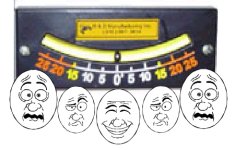</font><font color="blue" class="small">( But when I am in the seat I just have no idea. I never owned
such a thing. 10 degrees might be perfectly fine in one instance and a guaranteed flip over in another. I am tending to be super cautious because I just don't know. )</font>
In the year or so that I have owned our
B2910 I have found that almost all of the scary situations/potential flip-overs have come when I was operating the FEL or had the FEL attached, loaded, and raised to some extent. I tend to avoid potential problematic areas and slope conditions that could cause a flipover .... I just find a another route.
I have had at least one tire off the ground on numerous occassions, and both rears off the ground a quite a few times.
It's been said before and it's great advice ....
Keep it low and slow. It will allow you to possibly prevent a tip-over that would be impossible to stop if you are moving slightly faster or have the bucket just a few inches higher.
I been working moving sheep manure from the neighbors down to my garden using a dump cart. I have take the cart to neighbors, unhook it from my tractor, load it, rehook, haul it the garden, and dump. This prevents me from easily having something on the 3PH for ballast .... and my tires aren't loaded. Still, I have managed to load the cart to heaping 23 times (90,000 lbs worth) without an incident (knock on wood) ... simply by taking smaller bites with the bucket, keeping very low to the ground while moving, raising it very slowly, and limiting my moving of the tractor as much as possible while the bucket is raised.
At some point you will develop a "feel" for it .... and if you are moving slow enough it won't be a problem.
BTW, I wouldn't recommend operating without ballast to anyone .... it is dangerous.

